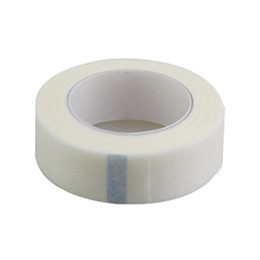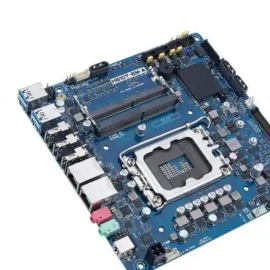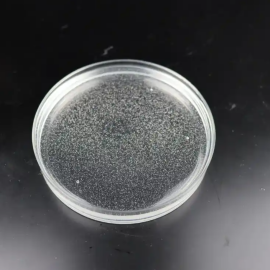Silicone pressure-sensitive adhesive market prospects, the next few years is expected to continue to grow. With the rapid development of electronics, automotive, construction and other industries, the demand for high-performance, environmentally friendly silicone pressure-sensitive adhesives is increasing. Especially in the field of new energy vehicles and smart homes, the demand for its application has grown significantly. What are the technical requirements of silicone pressure-sensitive adhesive?
Silicone PSA has become an indispensable functional material in modern industry by virtue of its unique chemical inertness, extreme temperature resistance, biocompatibility and adjustable viscoelastic properties. Silicone pressure-sensitive adhesive can bond a variety of difficult-to-stick materials, such as non-surface-treated polyolefins, fluoroplastics, polyimide and polycarbonate. In addition, it also has good dielectric properties and aging resistance, and can resist the erosion of ultraviolet light, ozone and other environmental factors.
There are five aspects to introducing silicone PSA:
- What is the chemical composition of silicone PSA?
- Medical and health field
- Electronic device manufacturing field
- Industrial Manufacturing and Emerging Fields
1. What is the chemical composition of silicone PSA?
1.1 Base polymer: polydimethylsiloxane (PDMS)
The PDMS main chain consists of alternating silicon (Si) and oxygen (O) atoms (-Si-O-Si-), with each silicon atom connecting two methyl groups (-CH₃) to form a helical flexible chain. The chemical bonding properties are as follows:
(1) Si-O bond energy: 452 kJ/mol (significantly higher than the 348 kJ/mol of the C-C bond), conferring high thermal stability;
(2) Bond angle and rotational freedom: the Si-O-Si bond angle is about 143°, and the free rotational energy barrier is only 0.8 kJ/mol, which makes the molecular chain extraordinarily flexible;
(3) Molecular weight distribution: PDMS with a molecular weight of 200,000-500,000 is usually chosen, and the low molecular weight part (<5%) needs to be strictly removed to avoid migration.
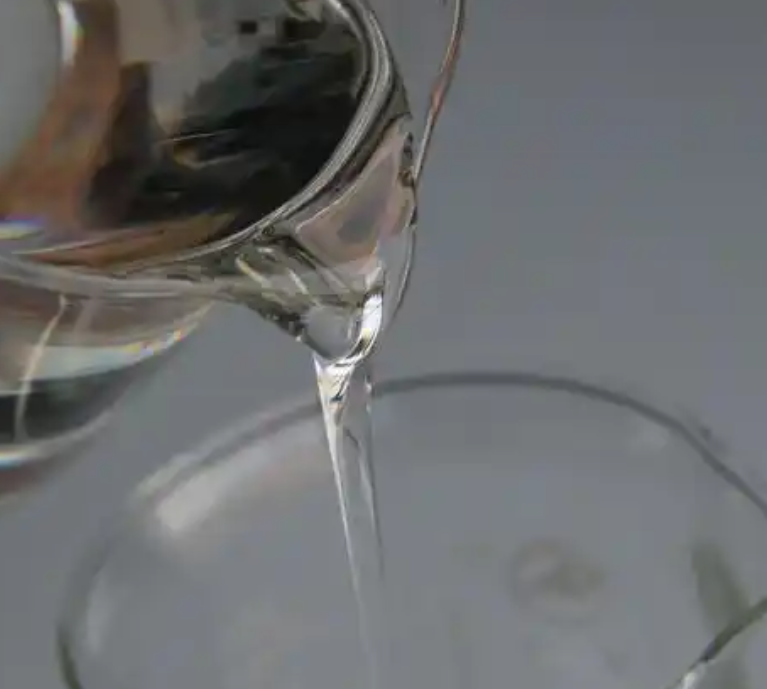
1.2 Tackifier resin: MQ resin
MQ resin is condensed from monofunctional trimethylsiloxane (M unit, (CH3)3SiO1/2(CH3)3SiO1/2) and tetrafunctional silicon dioxide (Q unit, SiO4/2SiO4/2), its The M/Q ratio (typically 0.6-0.8) determines the tackifying efficiency of the resin, and the MQ resin is physically entangled with the PDMS chains to form a hydrogen-bonding network, which lowers the energy storage modulus (G') and improves adhesion;
It has a softening point of 80-150°C and maintains adhesion at high temperatures; generally, the mass ratio of PDMS to MQ resin is 1:0.5 to 1:1.2.
1.3 Crosslinking system
(1) Peroxide crosslinking
Commonly used crosslinking agents: diisopropyl peroxide (DCP), benzoyl peroxide (BPO).
Reaction mechanism: high temperature (>160 ℃) decomposition of free radicals, capture of the methyl hydrogen atom on the chain of PDMS, the formation of inter-chain cross-linking;
Crosslinking density control: DCP addition of 0.5-2 phr (per 100 resin), crosslinking density up to 1 × 10-⁴ mol/cm³ (measured by dissolution method);
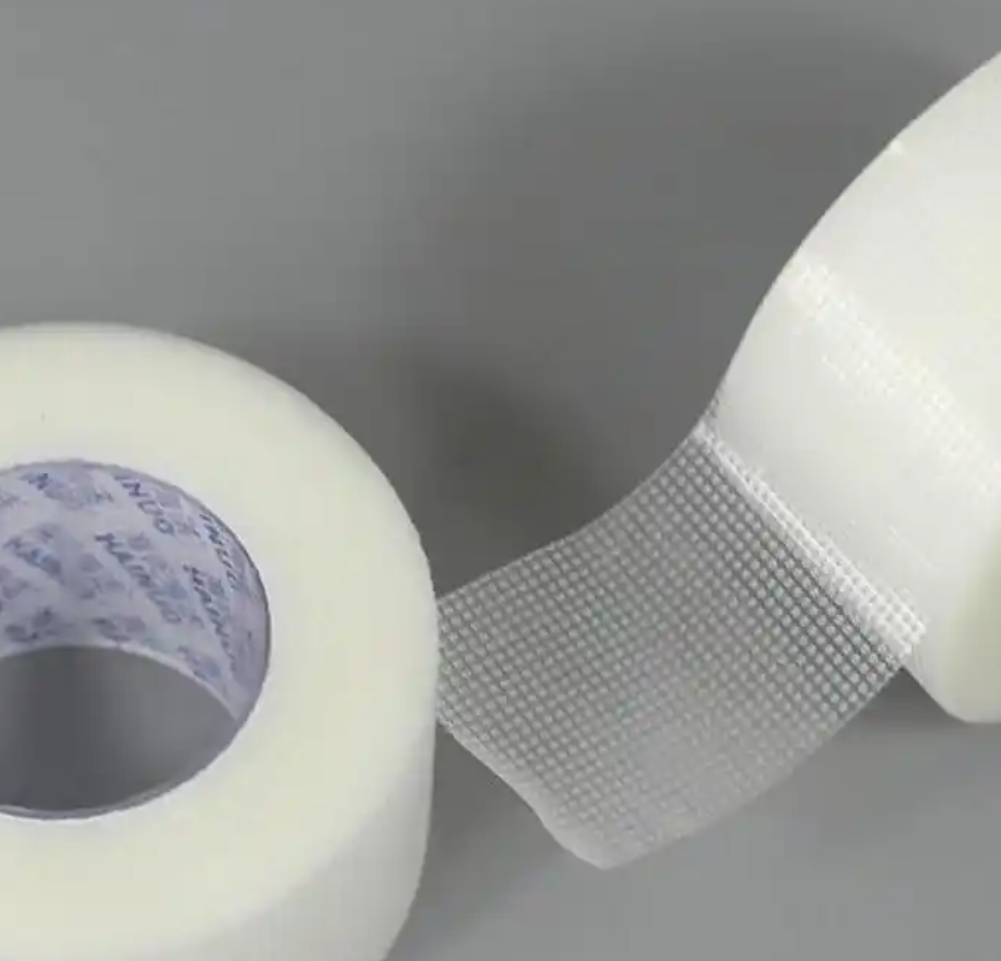
(2) Platinum-catalyzed addition crosslinking
Hydrogen-containing silicone oil (Si-H) and vinyl silicone oil (Vi-PDMS) under the action of a platinum catalyst undergo a hydrogenation-silanation reaction.
This cross-linking system has no by-products, has a long applicability period (>8 h), and is suitable for precision coating; however, the platinum concentration should be in the range of 5-10 ppm, and an excess will cause the colloid to become brittle.
XJY-301 Silicone Pressure Sensitive Adhesive
It is made from the specific structure of silicone resin and high molecular weight polydimethylsiloxane in conjunction with organic adhesives for specific scenario conditions.
Compared with natural rubber, it is characterized by heat resistance, high stability, good electrical insulation, good transparency, high peel adhesion, and chemical resistance. In industrial product processing, electronic processing, optical materials, health care and mica tape, splicing tape, protective film, and other fields PSA properties have a wide range of applications.
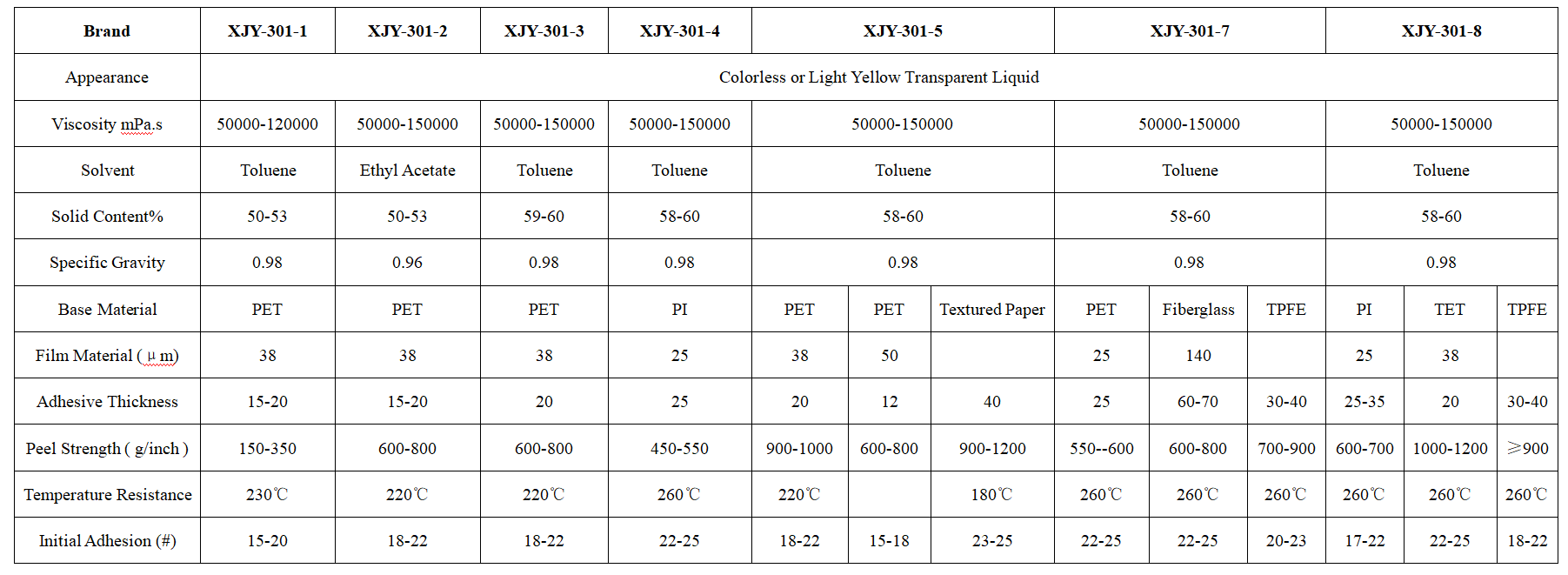
2. Medical and health field
2.1 Transdermal drug delivery system
Transdermal patches provide sustained release of drugs (e.g., fentanyl, nicotine replacement therapy drugs) through the skin, avoiding first-pass effects and improving patient compliance.
Advantages:
Long-term adhesion: need to be continuously attached to the skin surface for 3-7 days, with a shedding rate of <5%;
Moisture permeability and air permeability: water vapor transmission rate (MVTR) needs to be >2000 g/m²/day to prevent skin maceration;
Drug compatibility: the colloid does not adsorb drug molecules, ensuring a stable release rate (zero-grade kinetics).
Silicone pressure-sensitive adhesive solutions:
(1) Molecular structure design: low cross-linking density PDMS network (cross-linking point spacing > 10 nm) is used to allow free diffusion of drug molecules;
(2) Interfacial modification: introduction of hydrophilic polyethylene glycol (PEG) side chains to balance moisture permeability and adhesion;
(3) Clinical validation: Validation of the drug release profile by ex vivo skin permeation experiments (Franz diffusion cell) to ensure that the 72-hour cumulative release deviation is <10%.
The application of silicone pressure-sensitive adhesives in transdermal drug delivery systems requires attention: small siloxane molecules (e.g., D4, D5) may cause skin irritation, and the residual amount needs to be reduced to <50 ppm by high-temperature vacuum de-volatilization process; electrolytes in sweat will reduce the interfacial adhesion, and perspiration resistance can be improved by surface grafting of amphoteric ionic polymers (e.g., sulfonated betaines).
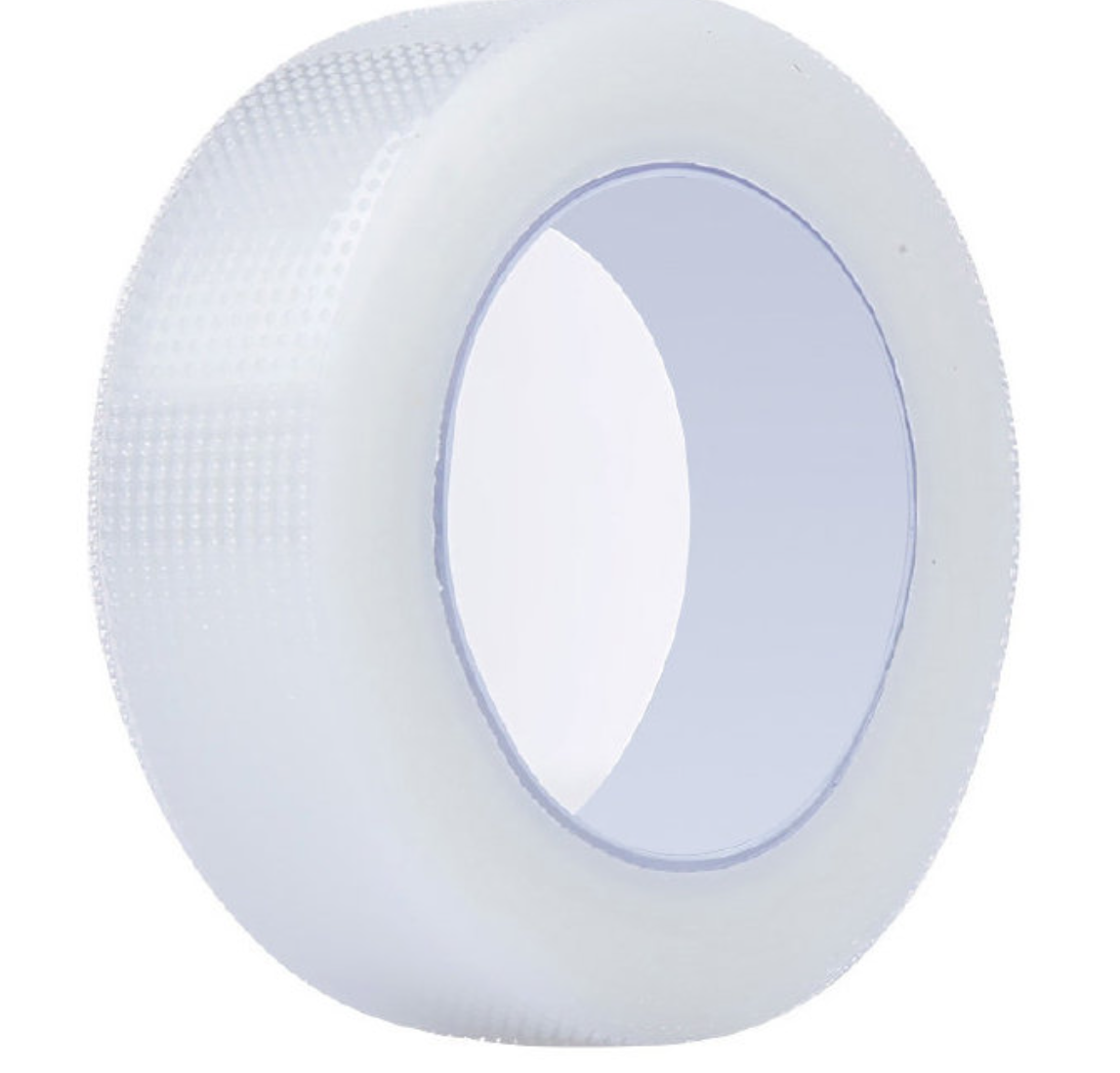
2.2 Medical Electrodes and Biosensors
ECG electrodes, EEG sensors, and other long-term attachment devices need to ensure signal stability and skin safety.
Advantages:
(1) Conductivity: volume resistivity <1 Ω-cm, reducing signal noise;
(2) Biocompatibility: meets ISO 10993-5 cytotoxicity standards (cell survival >90%);
(3) Dynamic viscoelasticity: adapt to skin micro-motion (strain rate 0.1-10 Hz), peel force fluctuations <15%.
Silicone pressure-sensitive adhesive solutions:
(1) conductive composite system: add 20% -30% silver flakes (particle size 3-5 μm, diameter-thickness ratio > 50:1), the formation of the three-dimensional conductive network, the square resistance <1 Ω/sq;
(2) Flexibility enhancement: Introducing star-shaped PDMS topology to reduce the modulus to 50-100 kPa, matching the mechanical properties of the skin;
(3) Antibacterial functionalization: loaded with 0.5% ZnO nanoparticles, the bacterial inhibition rate against Staphylococcus aureus is >99%.
3. Electronic device manufacturing field
3.1 Flexible electronic device packaging
Flexible OLED displays, wearable sensors, etc. need to maintain stable packaging under bending (radius of curvature <5 mm) and stretching (strain >20%) conditions.
Advantages:
(1) Fatigue resistance: adhesion retention rate >80% after 100,000 bends;
(2) Low modulus: energy storage modulus G'<100 kPa, avoiding stress concentration leading to device fracture;
(3) Resistant to moisture and heat aging: 1000 hours at 85℃/85% RH, peel force attenuation <20%.
Silicone pressure-sensitive adhesive solutions:
(1) Molecular chain topology optimization: the use of hyperbranched PDMS structure, elongation at break> 500%;
(2) Filler orientation arrangement: add 1% carbon nanotubes (CNT), through the electric field orientation to form an anisotropic conductive network;
(3) Interfacial enhancement technology: pretreatment of substrate with silane coupling agent (e.g., KH-550), and enhancement of adhesion work to >200 mN/m.
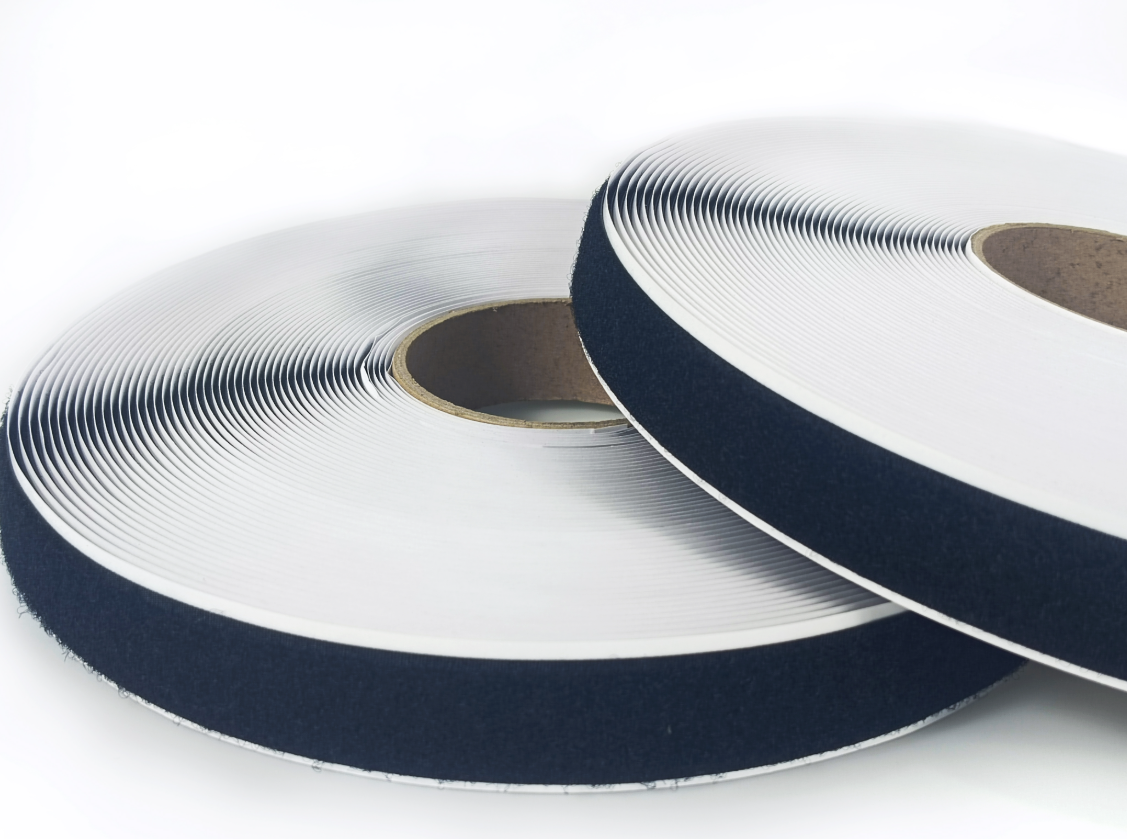
3.2 Temporary fixation of semiconductor chips
Wafer dicing, and chip packaging process require temporary fixation of the device and no residual peeling in subsequent processes.
Advantages:
(1) High-temperature stability: withstand 180-250 ℃ reflow soldering process, no overflow of glue or carbonization;
(2) Controlled peeling force: room temperature peeling force >2 N/cm, heated to 80 ℃ down to <0.1 N/cm;
(3) Ultra-low ionic contamination: Na⁺, K⁺ content <1 ppb, to avoid chip corrosion.
Silicone pressure-sensitive adhesive solutions:
(1) thermo-responsive system: add 5% paraffin microcapsules (phase transition temperature of 70 ℃), volume expansion after heating to trigger the interface debonding;
(2) Ultra-clean synthesis: using platinum-catalyzed addition reaction to avoid peroxide residue;
(3) Nanoscale thickness control: the thickness of adhesive layer is 5±0.5 μm by micro-gravure coating technology.
4. Industrial Manufacturing and Emerging Fields
4.1 New Energy Vehicle Battery Assembly
Insulation fixing between cells in the power battery module, heat dissipation interface filling, etc.
Advantages:
(1) Flame retardant: UL94 V-0 grade, limiting oxygen index (LOI) > 30%;
(2) Thermal conductivity: in-plane thermal conductivity >5 W/mK, temperature difference <5℃ (50 A charge/discharge conditions);
(3) Electrolyte corrosion resistance: 30 days immersion in LiPF₆/EC-DMC electrolyte, volume expansion rate <3%.
Silicone pressure-sensitive adhesive solutions:
(1) Flame retardant synergistic system: magnesium hydroxide (60%) and platinum compounds catalyzed carbon formation, residual carbon rate >40%;
(2) Thermal conductivity network construction: boron nitride nanosheets (50%) vertically oriented arrangement, in-plane thermal conductivity of 12 W/mK;
(3) Chemical resistance modification: Perfluoroalkyl side link branching, contact angle >120°, resistance to electrolyte penetration.
4.2 Aerospace thermal control system
Satellite heat sink paste, spacecraft multi-layer insulation (MLI) fixed and other extreme environment applications.
Advantages:
(1) Resistant to space irradiation: resistant to >1000 kGy γ-ray irradiation, quality loss <1%;
(2) Ultra-wide temperature range adhesion: peel force fluctuation <30% from -196°C (liquid nitrogen) to +300°C;
(3) Proton-oxygen erosion resistance: Low Earth Orbit (LEO) environment, mass loss rate <0.1 mg/cm²-h.
Silicone pressure-sensitive adhesive solutions:
(1) Phenylsiloxane copolymerization: introduction of 20% phenyl side chain, glass transition temperature (Tg) down to -120℃;
(2) Nano shielding layer design: 10 nm cerium oxide layer coated on the surface, reflecting 99% of UV irradiation;
(3) Vacuum compatibility optimization: volatile matter content (CVCM) <0.01%, passed NASA ASTM E595 test.
5. What are the challenges of silicone pressure-sensitive adhesives?
(1) Environmental upgrading: Developing bio-based silane monomers (e.g. cellulose-derived siloxanes) to reduce dependence on petroleum-based raw materials;
(2) Digital Manufacturing: Optimize formulations with machine learning (e.g. Bayesian optimization algorithms to shorten development cycles by 50%);
(3) Cross-scale integration: realize the integrated design of the nano-filler-micron structure-macro device, breaking through the existing performance limit.
6. How to make silicone PSA perform better?
Silicone pressure-sensitive adhesive is a high-performance pressure-sensitive adhesive, with the following excellent performance: it has excellent temperature resistance, can be in -75 ℃ to 300 ℃ under extreme temperatures to maintain stability, and is not easy to soften, deformation, or failure. It has excellent resistance to chemicals, water, oil, solvents, thermal degradation, and oxidative degradation, good peel adhesion, and adhesive strength. How to improve the competitiveness of products?
XJY Silicones is one of the leading silicone MQ resin and VMQ silicone manufacturers in China, with more than 30 years of R&D and manufacturing experience in the silicone industry and more than 15 related patents and technical support. Our silicone raw material products can meet the needs of the silicone pressure-sensitive adhesive field and support the provision of diversified customized solutions.

